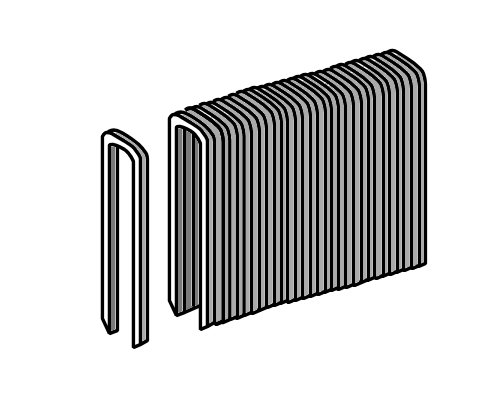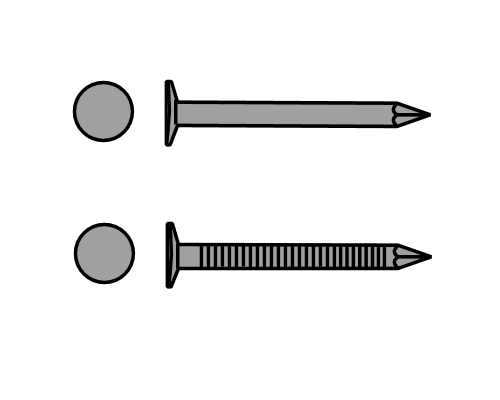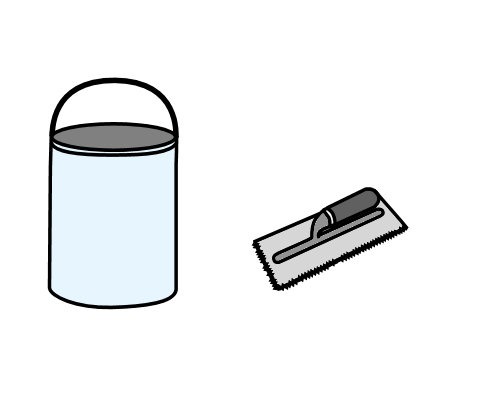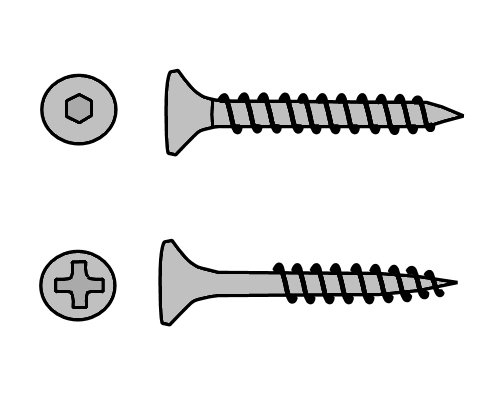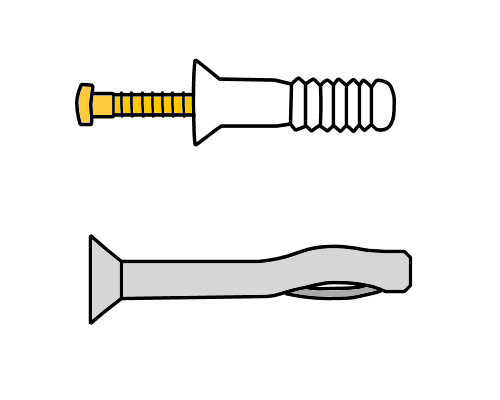Fasteners
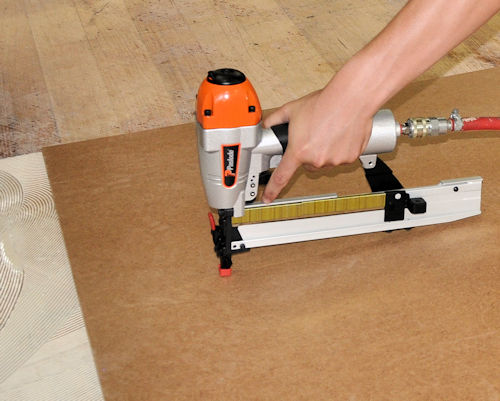 Audio for slide 1 (mp3 |6|KB)
Audio for slide 1 (mp3 |6|KB)
There are different methods for securing hard underlays to the subfloor, depending on the materials involved.
The manufacturer's recommendations should always be followed, unless you know for a fact that an alternative method will achieve an acceptable result and would be approved by the manufacturer in the event of a warranty claim.
Below are some common types of fixings used with hard underlays.


Learning activity
Audio 7 (mp3 |6|KB)Below are some combinations of underlay and subfloor. For each one, indicate which fixings you will use (including adhesive, where required), and specify the actual size and description of the fasteners.
You may use manufacturer's brand names if you wish. You may also assume that the subfloor is in good condition and ready for the underlay installation.
- 5.5 mm hardboard underlay fixed to Baltic pine 19 mm thick floor boards
- 12 mm plywood underlay fixed to hardwood 19 mm thick floor boards
- 5 mm MDF underlay fixed to structural particleboard flooring (Yellow tongue) 19 mm thick
- 5 mm fibre cement underlay fixed to concrete slab subfloor (already cured and patched)
- 5.5 mm hardboard underlay fixed to concrete slab subfloor (already cured and patched)

 Go to Tools and site safety
Go to Tools and site safety




